How to Lead Through Uncertainty with Confidence
Leadership Freak
APRIL 10, 2020
Admiral Jim Stockdale spent eight years as a prisoner of war in the “Hanoi Hilton.” He was tortured over 20 times and walked with a limp until he passed on July 5, 2005.

Leadership Freak
APRIL 10, 2020
Admiral Jim Stockdale spent eight years as a prisoner of war in the “Hanoi Hilton.” He was tortured over 20 times and walked with a limp until he passed on July 5, 2005.

High Scalability
APRIL 8, 2020
There may be an undiscovered tribe deep in some jungle somewhere that hasn’t made up their mind on microservices, but I doubt it. People love microservices or love to hate microservices. There’s not much in between. So it means something when even a team at a company like Uber announces a change away from microservices to something else.
This site is protected by reCAPTCHA and the Google Privacy Policy and Terms of Service apply.

Agile42
APRIL 10, 2020
If you have read our first article on working remotely , and your team has successfully established a digital persona, created rituals and revised their working arrangements, you are already well on your way to re-establishing your productivity. Now is a good time to dig a little deeper to keep your teams moving forward. Working Virtually Working in a distributed environment requires discipline and attention to the actual work getting done.

Liquid Planner Collaboration
APRIL 9, 2020
Growing commute distances, the ever-rising cost of office space, and a concerted effort to reduce emissions to better protect the environment have all motivated a gradual movement to work from home. Luckily, technological advancements in the last ten years have enabled remote work to become a viable option — and the preferred option to many. And in the past month, the Coronavirus pandemic , and related stay-at-home orders, have compelled those slow to adopt to fully embrace the trend.

Speaker: Chandra McCormack, CPA, MBA, NACD.DC
Technical degrees might open doors—but it’s the soft skills that keep them open. In the face of disruption, evolving workplace dynamics, and rising expectations of leadership, soft skills like communication, emotional intelligence, and presence have become core business essentials—not nice-to-haves. Inspired by stories from her father coupled with her own career journey, seasoned executive Chandra McCormack breaks down how to lead with impact, connect with purpose, and cultivate a workplace cult

Leadership Freak
APRIL 8, 2020
You waited for the other shoe to drop before COVID-19. You will wait for the shoe-drop after COVID-19. Leaders and managers exist because: Solutions are hard to find. Improvement needs relentless attention.

Vantage Circle
APRIL 6, 2020
We all are dealing with an unprecedented situation because of COVID19 today. Workers from all around the globe are working remotely and trying to adapt to the remote work culture. Remote working has its perks, and it gives you the flexibility to finish your tasks. But to be more productive in this work culture, you must understand the dos and don'ts.
OrgDev Digest brings together the best content for management professionals from the widest variety of industry thought leaders.

Liquid Planner Collaboration
APRIL 7, 2020
Depending on the scope and ambition of your upcoming project, going public and asking for stakeholders to pitch in support of your development efforts might be the most logical financial decision to make. Whether you’re working with B2B investors or B2C backers, keeping your stakeholders in the loop about the current status of your project is of utmost importance.

Leadership Freak
APRIL 9, 2020
“Holding people accountable” feels oppressive – like pressuring reluctant people to do something they resist. Insecurity, lack of clarity, and lack of follow-up make accountability frustrating. Frustration turns accountability into punishment.

Vantage Circle
APRIL 8, 2020
Times have changed. No longer is the traditional office space job the only option. The current workforce, comprising largely millennials, seek more flexible work hours. Out of which part-time, working remotely and telecommuting seems to be the most popular options. While both, remote work and telecommuting might have similar descriptions but there’s a slight difference.

Tanveer Nasser
APRIL 7, 2020
If there's one aspect of today's workplaces most of us could do without, it's office politics. And yet, the simple truth is you need to master it to grow your career. Unfortunately, for most women, this is easier said than done. So how can they overcome this hurdle and become more valued contributors to their organization? Renowned executive coach Bonnie Marcus shares how in this episode of Leadership Biz Cafe.

Speaker: Jeremy York
Join us for a thought-provoking exploration of the rapidly evolving HR landscape as we examine how technological innovation, regulatory changes, talent strategies, and evolving diversity approaches are reshaping the profession. This webinar will provide HR professionals with practical insights on leveraging AI and emerging technologies while maintaining compliance in an increasingly complex regulatory environment.

AIHR
APRIL 8, 2020
With the rise of remote work and increased employee mobility thanks to the gig economy, knowledge sharing is becoming increasingly important for organizations. However, it is not enough to simply facilitate knowledge sharing. In order to be effective, HR should actively combat knowledge hiding. Knowledge hiding can be defined as “an intentional attempt by an individual to withhold or conceal knowledge that has been requested by another person”.
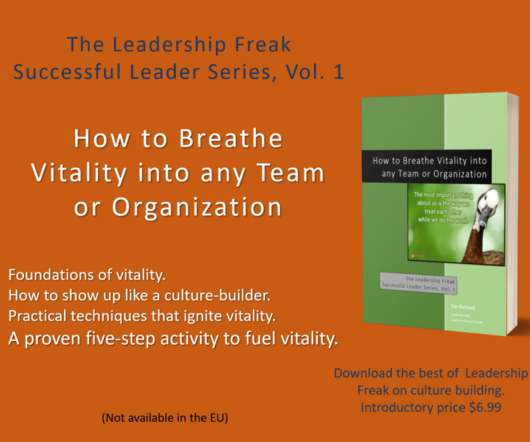
Leadership Freak
APRIL 7, 2020
The difference between wannabe leaders and actual leaders is focus. I’ve been asking leaders, “What would make this week just a little better than last week?

High Scalability
APRIL 9, 2020
Google added another book into their excellent SRE series: Building Secure and Reliable Systems. It's free to download, so don't be shy. It's not short: 557 pages and 21 chapters! So what's it about? In short it's about "reliability through the lens of security.". In long, Ana Oprea, one of the authors, gave a good overview. anaoprea : There are multiple questions about what this book is about, who it's for and what might be relevant for me.

Agile42
APRIL 9, 2020
Lately, every item in my newsfeed seems to fall into one of two categories: doom and gloom, or work work work and productivity. We deserve a break, you deserve a break, and it is time for all of us to take one, kindly provided by our beloved Carrington-Brown. The supremely talented musical and comedy duo (trio if we count Joe, the cello) impressed us for the first time in the 2014 Scrum Gathering mingle evening where Dave Sharrock and I have been the chair.

Speaker: Carolyn Clark and Miriam Connaughton
Forget predictions, let’s focus on priorities for the year and explore how to supercharge your employee experience. Join Miriam Connaughton and Carolyn Clark as they discuss key HR trends for 2025—and how to turn them into actionable strategies for your organization. In this dynamic webinar, our esteemed speakers will share expert insights and practical tips to help your employee experience adapt and thrive.
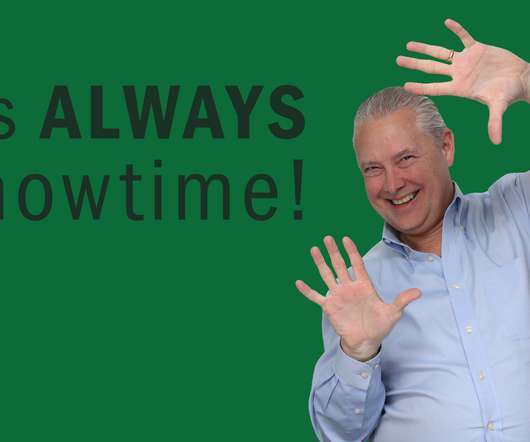
Kevin Eikenberry
APRIL 7, 2020
You are leading…and others are watching. This is true when things are going well and when they’re not going so well. That’s right. That means as a leader, you are on display. And in the words of my friend, Tom Peters, it’s always showtime. However, all of this does not mean that I am suggesting […]. The post It’s Always Showtime – Remarkable TV appeared first on Kevin Eikenberry on Leadership & Learning.
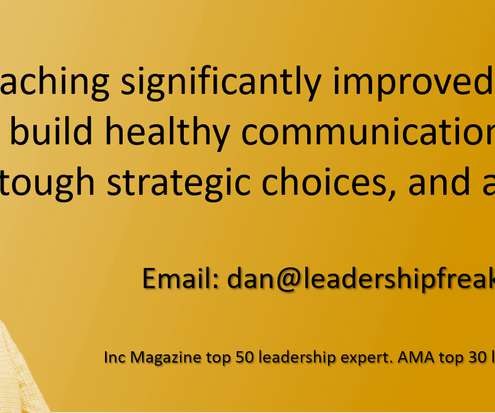
Leadership Freak
APRIL 6, 2020
The Little Blue Engine begins, The little blue engine looked up at the hill. His light was weak, his whistle was shrill.

Eric Jacobsen Blog
APRIL 10, 2020
Kip Tindell, former chairman and CEO of The Container Store , was at the helm of the company since the first store opened in Dallas, TX in 1978 until late 2019. In 2014, he, along with Paul Keegan and Casey Shilling, wrote the book, Un-contain-able. In it, Tindell reveals the seven foundation principals of his unique values-based business philosophy.
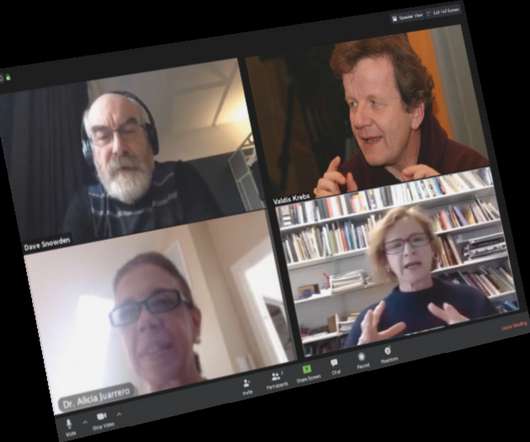
Agile42
APRIL 9, 2020
The world is in turmoil. As we all find ourselves challenged by situations we never thought we would face, more and more people are turning to complexity for understanding. This epidemic has managed to make the complex, vulnerable, interconnected states we all exist in more visible than ever, but it has also made us think about the future and its potential in new ways.

Speaker: Kaitlin Ruby Carroll
Retaining top talent in 2025 means rethinking benefits. In a competitive job market, fertility benefits are more than just offerings - they are a commitment to your team’s well-being. Gain critical insights into the latest fertility benefits strategies that can help position your organization as an industry leader. Our expert will explore the unique advantages and challenges of each model, share success stories from top organizations, and offer practical strategies to make benefits decisions tha

Kevin Eikenberry
APRIL 6, 2020
Most leaders think of their job as that of leading. They have a responsibility for helping that team reach their goals. They have expectations placed on them by the organization to manage and lead. But leaders are teammates too. They are likely on at least two teams – the team of their peers and the […]. The post What Team Are You On? Defining a Leader’s Teammate Responsibilities appeared first on Kevin Eikenberry on Leadership & Learning.

Vantage Circle
APRIL 10, 2020
The biggest battles are won together. Organizational success is possible with a positive team dynamics. Not only it elevates team morale but it also gives the freedom to the team members to live up to their full potential. Tapping into their skillsets and overall experience that your teams have. So, what exactly is team dynamics and how does it play a crucial role?

Know Your Team
APRIL 9, 2020
With remote leadership, it’s easy to succumb to management practices that hurt our team. Here’s how to avoid doing so. I’m deeply troubled: Remote leadership can bring out the worst in us as leaders if we’re not mindful. Let me explain. Amidst COVID-19 with more teams are becoming remote than ever before, leaders who are working from home for the first time are trying to navigate the transition.

Agile42
APRIL 7, 2020
I want to thank everyone who attended the webinar about “Why your company will fail in 2020” together with us. We had a very positive feeling afterward, and especially happy for all the good questions you provided us with! Here you can find the recording of the session , feel free to have a look at it again, sharing it around with friends and colleagues. .

Speaker: Jeremy York
2024 has tested every organization, and 2025 promises no less - the warning signs are everywhere. If you’re relying on superficial approaches to diversity, you might find yourself scrambling to catch up. Thought diversity - the fuel for new ideas, fresh perspectives, and disruptive innovation - is more than a buzzword. It's a survival strategy. And if you’re not building it into your workplace culture right now , you’re heading for trouble.

Kevin Eikenberry
APRIL 5, 2020
Everyone wants to help. And everyone is pivoting to help you work and lead remotely right now. But most of those well-meaning people are pivoting. At the Kevin Eikenberry Group, we have been working remotely for more than a decade. We’ve specifically been helping remote leaders (i.e. [link] ) for over five years. We know […]. The post Providing You the Help You Need Right Now appeared first on Kevin Eikenberry on Leadership & Learning.

Vantage Circle
APRIL 8, 2020
( This is the 2nd Part of a two-part special contribution from distinguished guest author Shruthi Bopaiah. Click here to read the first part. ). In the first part , we spoke about 11 major areas that we need to keep an eye on to maximize the effectiveness of your new Work-From-Home setting. We also touched upon the impact this new forced work setting will have on the mental health of employees - increased anxiety, difficulty in setting boundaries between work and home, and the pressure to be ava

Eric Jacobsen Blog
APRIL 8, 2020
Heed this advice from Julian Birkinshaw, author of the book, Becoming A Better Boss , on how to be a better leader. Strive to answer “Yes” to these three questions : Do you invest your time in things that help others to succeed? Do you invest in projects that will help the company in the long run, even if you won’t be around to get any credit for their success?
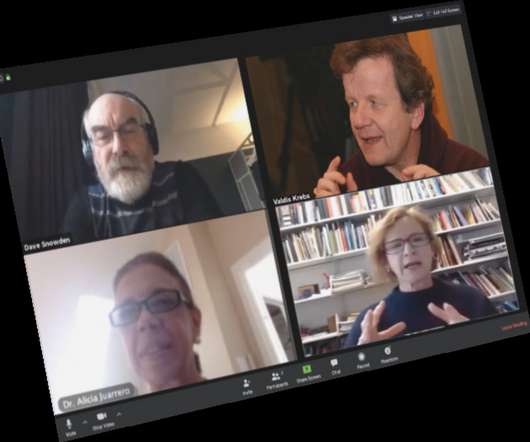
Agile42
APRIL 9, 2020
The world is in turmoil. As we all find ourselves challenged by situations we never thought we would face, more and more people are turning to complexity for understanding. This epidemic has managed to make the complex, vulnerable, interconnected states we all exist in more visible than ever, but it has also made us think about the future and its potential in new ways.

Speaker: Ann Meyers Piccirillo
From rapidly changing state-level labor laws and evolving workplace protections to new compliance expectations around pay equity and hybrid policies, HR teams are navigating a constant wave of regulatory updates. It’s not just about reacting anymore; it’s about anticipating risk, aligning stakeholders, and taking a smarter, proactive stance. In this session, we’ll cut through the noise and help you focus on what matters.

Accenture: OrgDev
APRIL 5, 2020
Everest Group Names Accenture a Leader in Intelligent Automation Business Processes

Vantage Circle
APRIL 8, 2020
The aim of onboarding employees is to make your new employees familiar with the work culture and the professional expectations of your company. This makes sure that the new hire proceeds comfortably and gets adjusted with their new role effectively. Onboarding in itself is one of the more difficult parts of the hiring process. Mix into it the ingredient of a remote employee and you have got one of the most challenging aspects of a hiring process.

Eric Jacobsen Blog
APRIL 6, 2020
When someone gives you negative feedback, think of it as a positive. If it’s accurate, it provides a growth opportunity; if it isn’t accurate, it provides an opportunity to strengthen your conflict resolution skills. Remember, no one is perfect. We all have blind spots when it comes to our strengths and weaknesses. And, we all do things that bother people.

Know Your Team
APRIL 4, 2020
In these troubling times, a lack of motivation at work might not only affect your employees – it can affect you as a leader, too. Consider these 5 tips. You don’t want to be feeling it, but there it is: A lack of motivation at work. That. You’ve noticed it bubbling up inside of you during these days of COVID-19, stronger than ever before.

Speaker: Radhika Samant and Todd Wuestenberg
Employee recognition has often been deemed a "feel-good" initiative, tied closely to rewards. While we understand its importance, we tend to associate recognition with intangible outcomes like engagement and sentiment, rather than direct impacts on retention and high performance. In today’s workplace, the true ROI of recognition lies in its ability to regenerate tangible, business-driven results.
Let's personalize your content